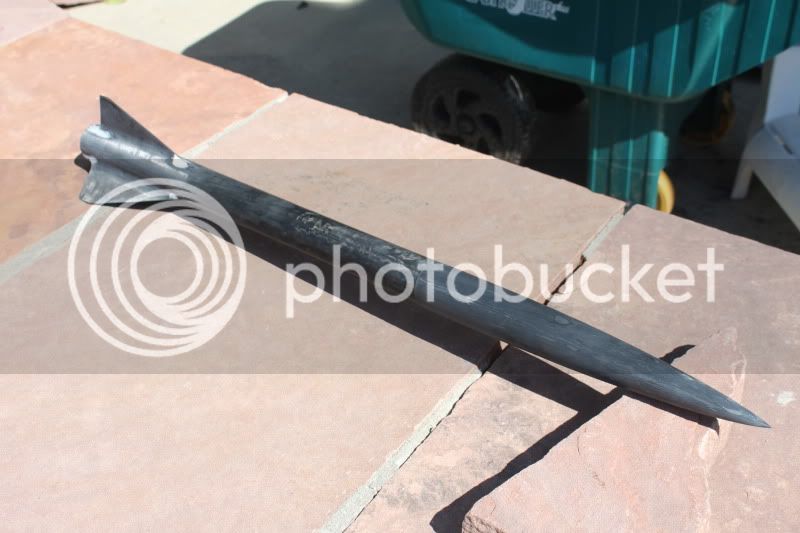But then why is it that stable trajectories can be formed by objects with no fins? I was under the impression that:
1. The fins "straightened" out the airflow
Not exactly. The airflow is straight when flowing around a long slender object anyways, aside from the boundary layer, and the fins will increase the size of the boundary layer, not decrease it. Therefore, if anything, the fins decrease the overall straightness of the flow.
2. The fins pulled the CP backwards, allowing stable flight
Yes, the fins move the CP backwards. The CP is a measure of the location (roughly speaking) which all aerodynamic forces are centered around. Lift producing devices at the very back of the rocket will significantly increase rear aerodynamic forces at a small (but nonzero) angle of attack, which is the reason fins work.
3. Stable flight is a result of the CP being behind the CG (without any external forces, eg: a crosswind)
True. See my answer to number 2 though - the reason for this is that if the CP (which can be considered to be the center of aerodynamic forces at a small nonzero angle of attack) is behind the CG, then a restoring moment will be created for any deflection of the rocket. If the CG is at the CP, then no moment will be created - the rocket will be neutrally stable. If the CG is behind the CP, a moment will be created for any angle of attack that increases the angle of attack.
4. All fins have measurable drag
Of course. Any item moving through a real fluid will have nonzero drag.
5. The result of the drag on the aft portion of the rocket brings the CP aft (think of it by drawing vectors where the drag force "points"; the CP is the point where they all intersect)
This is where you go wrong. Fins do not work by increasing the drag on the aft portion of the rocket. They work by allowing the rear of the rocket to create lift at nonzero angles of attack. If the rocket is in an airstream at a small angle of attack (say, <5 degrees), and you were to measure all of the forces perpendicular to the centerline of the rocket (since forces parallel to the centerline cannot produce a moment around the center of gravity), you would find that the body produces some amount of lift, and the nose produces some amount of lift, and the fins produce some amount of lift. The fin lift will be much greater than the body lift or nose lift, which will cause the net perpendicular force vector to be centered fairly far back on the rocket. This is the center of pressure. Lift, not drag is the key factor (which is good, since it allows the restoring moment to be quite high for a fairly low drag penalty).
6. Stability cannot occur without drag, this is why the Space Shuttle could tumble in space even though it is normally stable.
Passive aerodynamic stability cannot occur without dynamic pressure. Stability can be created in many ways. The easiest for an atmospheric vehicle is passive aerodynamic stability, in which the rocket is inherently stable due to the aerodynamic forces acting on it. The stability is primarily due to lift forces, however your statement is indirectly true, since lift forces cannot occur without dynamic pressure, and an object in a moving flow always has some drag.
A quick note about your last statement: most space vehicles, like the Space Shuttle, are not passively stable through aerodynamic means alone, and would tumble if they did not have ways to actively correct their flight path.
Also, I never said anything about "which way is up", I only speak in terms of fore and aft, which is defined by the direction of thrust. Furthermore, if you want to get into semantics, a fin can't "sense" anything, nor can it "respond" to stimuli. Lastly,
lift is not necessarily generated by deflection of air.
Which way is up is irrelevant. Typically, lift is defined as the component of the force perpendicular to oncoming flow, while drag is the component parallel to the oncoming flow. Fins do not "sense" anything per se, but their behavior does change depending on angle of attack. For angles less then the stall angle (fairly high for a swept delta, >15-20 degrees, and a bit less for squarish, higher aspect ratio fins), the lift force produced by the fin should be nearly linear with angle of attack. For twice the deflection of the rocket, the fin will provide twice the force, which will provide twice the restoring moment and twice the angular acceleration on the rocket.
As for your final statement, lift is always generated by the deflection of air. Anytime lift is created, there is a net deflection of air due to the force being applied to it. Simply saying that all lift is due to the deflection of air is not the most rigorous way to look at it, but your statement that lift "is not necessarily generated by deflection of air" is somewhat misleading.







